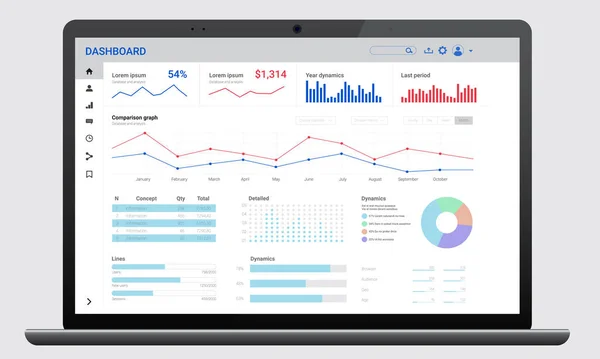In today’s gig economy, working is remote, freelance driven, and powered by technology. Freelancing is more than just a career path—it’s a lifestyle. But how do you get started?
The first step to freelance success is finding your niche. Think about it—what are you passionate about, and what skills do you excel in? Your niche will shape the foundation of your business. Once you’ve identified your strengths, it’s time to research the market. Are people paying for these services? If so, you’ve found your sweet spot. Lastly, define your target audience. Who needs your skills, and what problems can you solve for them?
This article will walk you through the essential 6 steps to help you build a successful freelance business and turn your ambitions into a sustainable career. Besides, it answers most FAQs freelancers ask.
Step 1: Discover Your Niche and Strengths
What are your strongest skills, and how can you use them to help others? Have you researched whether your passions align with market needs? Take a moment to jot down potential freelance services you can offer based on these reflections.
Every successful freelancer begins by doing as small self SWOT analysis to identify your niche. Think of this as the foundation of your freelance career—the area in which your skills, interests, and market demand intersect.
- Leverage Your Strengths: What are you good at? Reflect on your skills, hobbies, and passions. Whether it’s graphic design, writing, or coding, start with what feels natural and enjoyable for you.
- Identify Market Demand: Once you’ve nailed down your skillset, do some research. Are people paying for the services you’re interested in offering? Platforms like Upwork and Fiverr can give you insights into what’s in demand.
- Define Your Target Audience: Know who you want to work with. Are you targeting small businesses, startups, or individuals? Understanding your audience helps you tailor your services to meet their specific needs.
Example: Alex, a 21-year-old copywriter, started freelancing with a focus on social media content for small businesses. By honing in on a niche market and delivering consistent value, she quickly built a reputation and expanded her client base.
Step 2: Build a Brand That Stands Out
In freelancing, your personal branding is everything. It’s how clients perceive your skills, professionalism, and work ethic. The more you build a recognizable, trustworthy brand, the easier it will be to attract clients.
- Choose a Business Name: Your name should be memorable, relevant, and available as a domain for your website. If you’re offering creative services, think about how your name can reflect that.
- Create a Professional Website: Even if you’re just starting out, a website is non-negotiable. It’s the perfect place to showcase your portfolio, explain your services, and make it easy for clients to contact you.
- Establish a Strong Online Presence: Beyond a website, use social media platforms to connect with potential clients. LinkedIn, X, and Instagram are great places to share your insights and showcase your expertise.
For instance, take Sarah, a 22-year-old graphic designer who started on Fiverr with zero clients. Through networking and continuous skill-building, she grew her client base, landing contracts with big brands within just a year. Her journey is a testament to the power of persistence and smart strategies in freelancing.
Step 3: Master Your Craft and Keep Learning
Freelancing is all about skill, and the better you are, the more you’ll succeed. Clients are always looking for experts, so continually improving your abilities is key to staying competitive.
- Invest in Continuous Learning: Whether through online courses, workshops, or books, make sure you’re consistently sharpening your skills. Platforms like Udemy, Coursera, or Skillshare are great for learning on the go.
- Build a Strong Portfolio: Your portfolio is your most powerful marketing tool. Focus on quality over quantity. Select your best projects and highlight the impact your work had on clients.
- Stay Updated on Trends: Industries evolve, especially in fields like design, tech, or marketing. Stay ahead of the curve by subscribing to industry newsletters, following influencers, or attending webinars.
Step 4: Finding Clients and Building Long-Term Relationships
Landing that first client can be intimidating, but don’t get discouraged. With the right approach and persistence, you’ll soon find a steady stream of work.
- Networking: Join freelance communities, attend virtual events, or connect on LinkedIn. Networking opens doors to collaborations and potential clients.
- Cold Pitching: Take the initiative by reaching out to potential clients. Tailor your pitches to explain how you can solve specific problems they’re facing. It’s about offering value, not just selling your services.
- Freelance Platforms: Platforms like Upwork, Fiverr, and Freelancer can help you get started. While competition is stiff, they’re great for gaining experience and exposure.
- Prioritize Client Retention: It’s easier to keep existing clients than to find new ones. Offer excellent service, deliver on time, and maintain open communication to build trust and loyalty.
Step 5: Manage Your Finances Like a Pro
Handling your finances properly is crucial for freelance success. Without a structured financial plan, it’s easy to become overwhelmed.
- Set Fair Rates: Research the standard rates for your services and experience level. Don’t undervalue your work, but ensure your rates are competitive in the market.
- Create a Budget: Track your income and expenses. Tools like QuickBooks or Wave can help you manage your freelance business finances efficiently.
- Save for Taxes: Freelancers are responsible for their own taxes, so setting aside 20-30% of your income for tax purposes is essential.
- Invest in Your Business: Reinvest some of your earnings into marketing, tools, or courses that will help you grow your business further.
Step 6: Time Management and Productivity Hacks
Time management is essential to maintaining a work-life balance as a freelancer. Without a boss to set deadlines, it’s easy to either overwork or underperform.
- Set Daily and Weekly Goals: Breaking larger projects into smaller tasks helps you stay organized and on track.
- Time Blocking: Use a time-blocking technique to allocate specific times of day for different tasks like client work, marketing, or learning.
- Eliminate Distractions: Minimize interruptions by setting up a focused work environment. Set boundaries with family or roommates and use tools like “Do Not Disturb” mode on your devices.
- Outsource or Delegate: As your business grows, outsource tasks like bookkeeping or design to free up more time for high-priority work.
FAQs: Quick Tips for Freelance Beginners
Q: How do I know what to charge?
A: Research the rates freelancers with similar experience and skills charge in your niche. Consider your costs, the value you provide, and industry standards. Start slightly lower and adjust as you gain more experience.
Q: How can I land my first client?
A: Begin with cold pitching or apply on freelance platforms like Fiverr and Upwork. Don’t be afraid to offer your services at a reduced rate or even volunteer for a short project to build your portfolio.
Q: What if I don’t have enough experience?
A: Start with small, low-risk projects to gain experience and build your portfolio. You can also work on personal projects to showcase your skills.
Q: How can I avoid burnout as a freelancer?
A: Set clear boundaries for work hours, take regular breaks, and make sure to balance work with personal time. Learning when to say no to projects is also important.
Q: What are the best platforms for freelancers?
A: Upwork, Fiverr, and Freelancer are great for beginners, but you can also explore niche platforms like 99designs (for creatives) or Toptal (for developers).
How to Overcome Freelance Challenges and Build Resilience in Freelancing
Freelancing comes with its own set of challenges, from inconsistent income to difficult clients. But resilience and adaptability are key to overcoming obstacles.
- Build Resilience: Accept that setbacks will happen. Learn from them, adjust your strategies, and keep moving forward.
- Embrace Flexibility: Client needs and industry trends will change, so be open to evolving your services or learning new skills.
- Find a Support Network: Join freelancer communities or find a mentor to guide you through challenges. Having support can be invaluable in navigating tricky situations.
The Future of Freelancing for Gen Z
Freelancing offers a world of opportunities for Gen Z. By building a strong personal brand, honing your skills, and staying adaptable, you can create a rewarding and flexible career. The future of work is remote, freelance-driven, and powered by technology—and with the right approach, you’ll be perfectly positioned to succeed.
Remember: Building a freelance business takes time, persistence, and passion. Stay focused, continue learning, and you’ll be well on your way to creating a thriving, sustainable freelance career.
Tools and Resources
- Freelance Platforms: Upwork, Fiverr, Freelancer
- Learning Platforms: Coursera, Skillshare, Udemy
- Financial Tools: QuickBooks, Wave, FreshBooks
- Time Management: Trello, Asana, Clockify
- Portfolio Sites: Behance, Dribbble
In conclusion
Freelancing offers boundless potential for Gen Z, but success won’t come overnight. It takes time, persistence, and a commitment to continuous improvement. Start by finding your niche, building your brand, and honing your craft. Remember, your freelance business is only as strong as the effort you put into it.
Are you ready to take the first step? Sign up for a freelance platform today, build your portfolio, or reach out to potential clients—you have everything you need to succeed! Keep pushing forward, and your freelance dream will soon become your reality.



